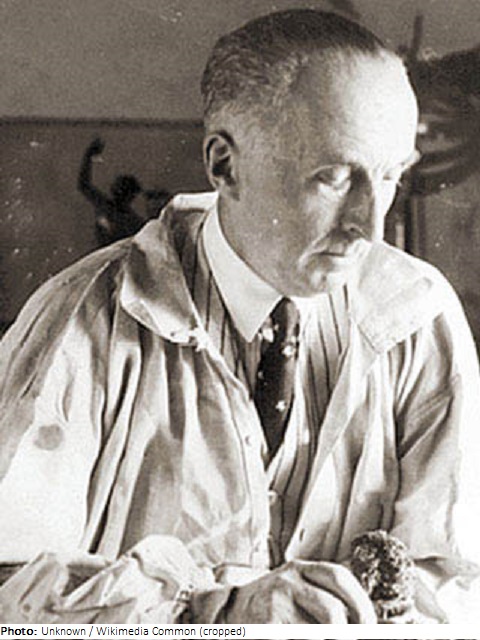Tom Simpson

Biographical information
| Roles | Referee |
|---|---|
| Sex | Male |
| Full name | Thomas G. "Tom"•Simpson |
| Used name | Tom•Simpson |
| Born | 16 January 1877 in Prestwich, England (GBR) |
| Died | 10 May 1964 in Basingstoke, England (GBR) |
| NOC |  Great Britain Great Britain |
Biography
Tom Watson was the son of a wealthy Lancashire colliery owner, and was raised in the family home at Winkley Hall, Clitheroe. He was sent to South Lynn College, Eastbourne, before going to Trinity Hall, Cambridge, where he studied law and was called to the Bar, Inner Temple, in 1905. His legal career was far from impressive but his love of art and golf were a big distraction for him.
Watson played his early golf at Woking, Worplesdon, and Royal Eastbourne, and regularly played for his Bar Golfing Society, of which the noted golfing writer Bernard Darwin was a team-mate. It was after playing a round at Woking in 1910 that Simpson decided he wanted to be a golf course designer, and from there he went on to become one of the best-known British golf course architects. Courses in France and Belgium have stood the test of time of Simpson designs, and in the British Isles, Ballybunion, County Louth, and Cruden Bay are regarded as three of his best designs.
Simpson also created private golf courses for some very influential clients like Lord Mountbatten, Sir Phillip Sassoon, a couple of members of the Rothschild family, and King Leopold II of Belgium. In 1928 he published The Architectural Side of Golf with Herbert Wethered, a leading art and literature expert, and father of Joyce and Roger Wethered, two of the best known amateur golfers at that time. Over the next few years. Simpson would design or re-design courses in England, Ireland, mainland Europe and even in New Zealand, Kenya, and Indonesia. In the 1930s he was also involved in writing for newspapers and golf magazines on golf course design. He also spoke on the subject on the radio. After World War II Simpson accepted commissions in Switzerland and Spain, where he rebuilt the Royal Madrid course that was destroyed during the Spanish civil war.
Simpson was also an avid painter and exhibited at various galleries across London. He also published a book on contemporary etchings. He was a collector of wine, walking sticks, Persian rugs, 18th century furniture, and cigars, of which he reckons he smoked more than 45,000 in his life-time. Simpson maintained that in 50 years of designing golf courses he never once placed a bunker so that it would catch a bad shot, but placed it to catch a good shot that wasn’t quite good enough!
After his death, an obituary for Simpson did not appear in The Times, or other prominent newspapers or golf magazines. He commented to a friend some years earlier, however, that he would never be able to read his own obituary, and the friend passed this on to a colleague, the legendary golf correspondent Henry Longhurst, who proceeded to write Simpson’s obituary in 1959. Simpson was so pleased with it that he had 50 copies made and distributed them to his friends.
Referee
| Games | Sport (Discipline) / Event | NOC / Team | Phase | Unit | Role | As | |
|---|---|---|---|---|---|---|---|
| 1924 Summer Olympics | Art Competitions |  GBR GBR |
Tom Simpson | ||||
| Architecture, Open (Olympic) | Final Standings | Judge |